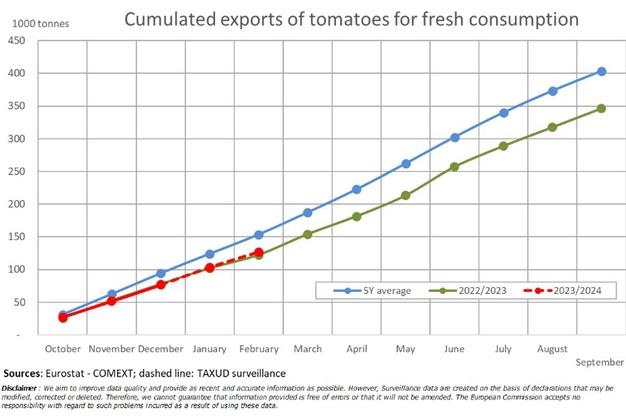Tomato prices in February significantly lagged behind those from February last year. A kilo of Dutch vine tomatoes fetched 1.52 euros per kilo, 52 percent less than in February of the previous year. In Spain, the price was even 70 percent lower.
Across the board, in the European Union, the price settled at 1.58 euros per kilo. This places the price below the five-year average, as revealed by a new European price overview.
The price drop goes against the trend. A slight price increase in February had been the norm over the past few years. It should be noted, however, that, unlike the past two winters, there has been an increase in lit cultivation. Also, more growers are traditionally entering production early, following a mild winter.
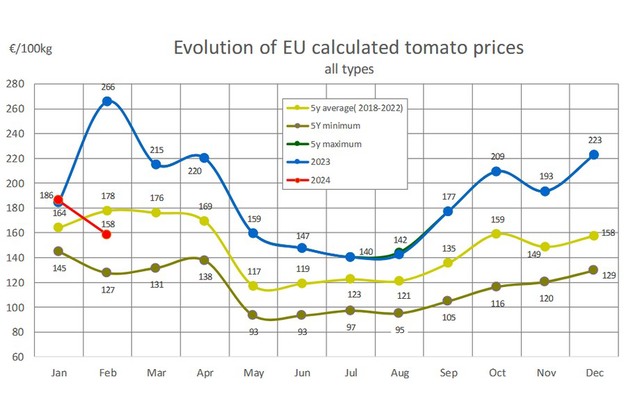 Especially 2023 was extreme
Especially 2023 was extreme
The price for a Dutch vine tomato in February is 14 percent below the average. The better-paid cherry and specialty tomatoes are priced at 3.43 euros per kilo, equal to the five-year average. Spring 2023 was thus particularly extreme.
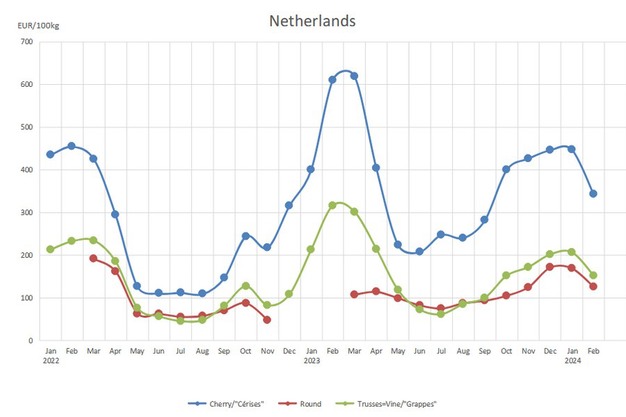
In Spain, the price remains further below the five-year average. A kilo of vine tomatoes fetches just over 69 euro cents. That is 43 percent less than the five-year average. Prices for loose tomatoes (-29%) and cherry and specialty tomatoes (-46%) are also significantly lower than the five-year average.
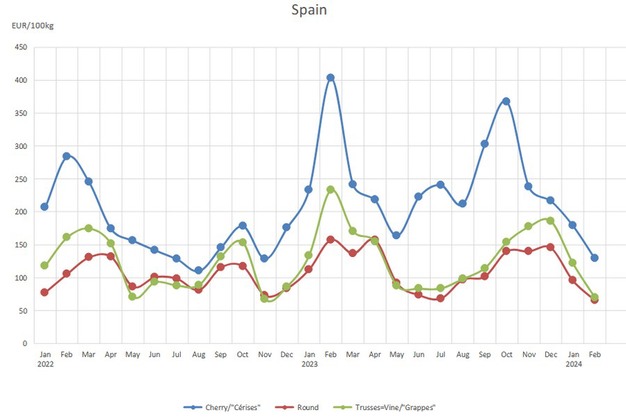
Import figures
Prices were mostly lower in February, but directly attributing this to increased import pressure is not justified based on the figures, it seems. The overview shows a decrease in imports from Morocco and Turkey in February, with the total imports close to the five-year average.
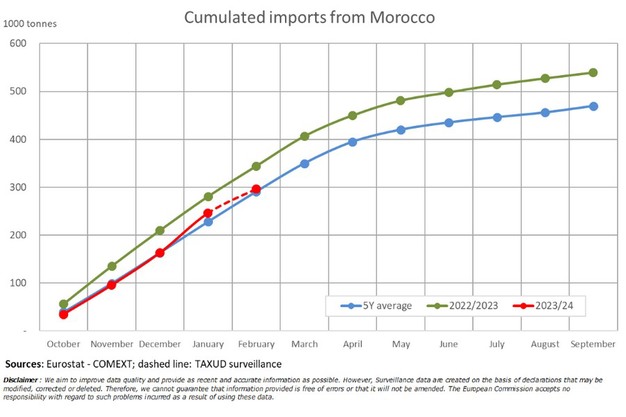
EU exports align with those of last year. This is significantly less than the five-year average. Notably, there was an increase in tonnage from Portugal. According to Eurostat figures, this rose to 233 thousand tons (in 2022, it was 155 thousand tons).
